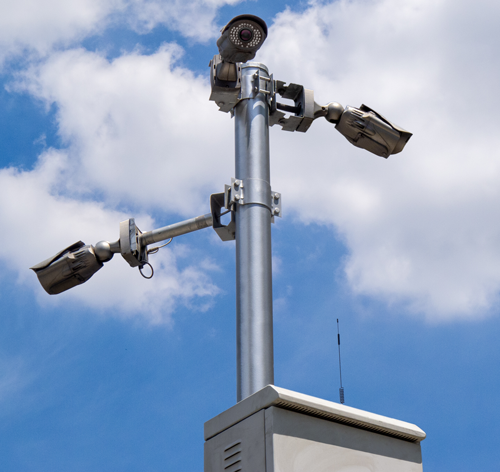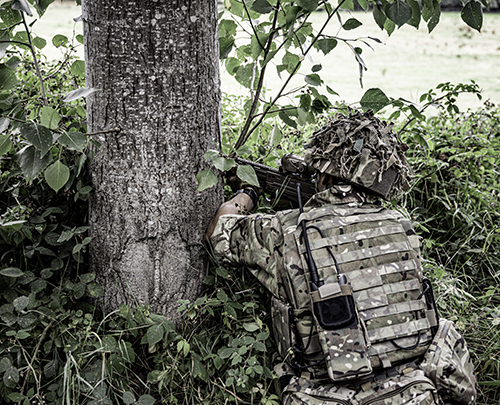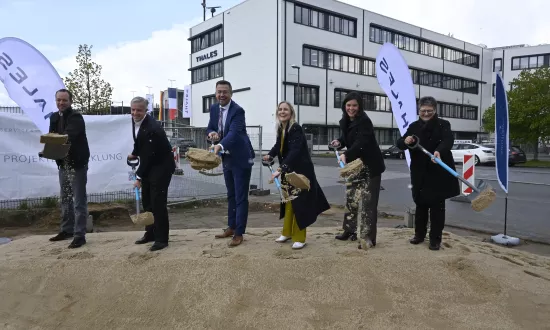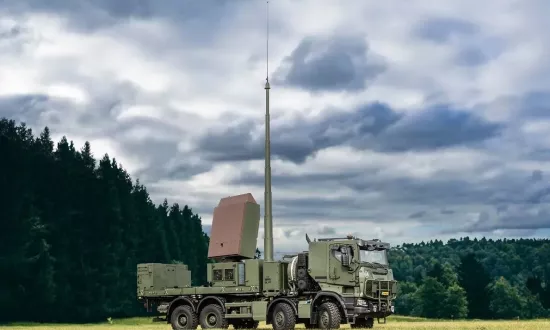Empowering today’s modern soldier by exploiting the electromagnetic domain

by Matthew Hunt, Head of Sales (Land Communications), Thales UK
Ask anyone for the first words that spring to mind at the mention of “cyberspace” and they will likely say some variety of: computers, networks, information and data. Whole virtual worlds, accessible in an instant.
Ask someone thirty, forty, fifty years ago and the likelihood is the general population will have never heard of the term – yet, “cyberspace” actually first appeared on the page in William Gibson’s 1984 novel Neuromancer – and it did so in terms as nebulous as they are hard to grasp:
“A consensual hallucination experienced daily by billions of legitimate operators, in every nation…A graphic representation of data abstracted from the banks of every computer in the human system. Unthinkable complexity. Lines of light ranged in the nonspace of the mind, clusters and constellations of data. Like city lights, receding.”
Gibson couldn’t have known what the world would look like in 2023. He couldn’t have known that his term would become the definition for something so embedded in our everyday lives. With everything – and everyone – now more connected than ever, technological advancement in communications technology has seated his intangible definition in terms we can make better sense of. It’s why, forty years on, the UK MOD’s definition of cyberspace seems much more familiar:
“An operating environment consisting of the interdependent network of digital technology infrastructures (including platforms, the Internet, telecommunications networks, computer systems, as well as embedded processors and controllers), and the data therein spanning the physical, virtual and cognitive domains.” (Cyber Primer, 2nd Edition)
The pervasiveness of cyberspace – so ingrained in our devices, our relationships, our day-to-day – has implications for the modern military environment. In the Future Character of Conflict, the Development, Concepts and Doctrine Centre (DCDC) described the 2014 joint battlespace as “congested, clustered, contested, connected and constrained”. Nearly ten years on and those 5Cs are more relevant – and challenging – than ever. The frontline is now increasingly digital.
The evolving threat: IEDs to CEMA
From smartphones and Personal Role Radios, through to drones and the controllers with which to operate them, today’s dismounted soldiers and operational units are trialling and deploying more integrated technologies than ever before. However, smartphone messages can be intercepted. Radio signals get detected and tracked. Controllers can be hacked. More connected soldier systems present greater “attack surface” opportunities to expose vulnerabilities and exploit the data therein, with Cyber and Electro Magnetic Activities (CEMA) increasingly supplementing improvised threats to become a mainstay of the modern battlespace.

CEMA is intentional in its objectives, targeted in its approach, and is as dangerous for individual soldiers as it is to whole countries. Attacks are often aimed at a nation’s operational technology and critical infrastructure, with commonplace, ubiquitous connected technologies, such as CCTV systems and Wi-Fi routers, often being targeted.
CEMA has three pillars:
- Effect: What can I do to impact the enemy?
- Protect: What can I do to stop the enemy affecting me?
- Understand: How can I find out what the enemy is intending to do?
The three pillars coalesce to form one overarching objective: operational advantage. CEMA is all about gaining a competitive edge. It’s about disrupting OODA loops so the adversary has to play on your terms. Maybe that’s by making an enemy behave in a way they don’t want to through jamming their network. Or it might be a case of making them believe that your ten radio signatures are actually 100 soldiers defending an outpost – forcing them by deception to where you want them to be. It can be argued as to whether deception is CEMA or good old-fashioned electronic warfare (EW), but it doesn’t really matter, as the boundaries blur and overlap with today’s equipment being capable of delivering more than one effect. At its core, CEMA is about exerting power and influence over someone else via electronic means to come out on top.
CEMA is a testament to how technology has given us the means to relentlessly chase this competitive edge. Where once we used our eyes to survey from a ship, we saw further by climbing up a mast. Then we got a telescope. Then we got radar. In every case, we are trying to stay ahead of our adversaries. What we are trying to do has not changed. Technology has given us the ability to see further and therefore given us the tactical advantage needed.
From technological frontiers to the digital frontline
CEMA is complex and multi-faceted by its very nature. Soldiers must protect themselves and their unit, which depends on the interoperable, interchangeable and harmonised set-up of every system involved to increase mission survivability and streamline operations. They must harden equipment against offensive CEMA from an enemy, and they must do all this while responding with CEMA effects of their own. CEMA is not the preserve of large systems operated at brigade level, but it is also accessible and effective in the hands of the soldier.

How might this be put into practice: an assault team can use on-the-soldier equipment such as Thales’ Storm 2 in a CEMA attack to disrupt Wi-Fi-connected security cameras, rendering them ‘blind’. This would be an electronic attack with a cyber-effect on real-world equipment. Now imagine that same equipment used by a four-man observation post to frequency scan and identify the presence of electronic signatures in a nearby wood. By integrating other technologies, they will be able to understand not only the frequency on which someone is transmitting, but also its power and the specific radio signature. This means they will be able to make better-educated inferences around who precisely is in that wood – conventional forces, reserves, special forces as well as which nationality – and decide on the best next steps. CEMA and EW are, however, two sided. While the observation post may have decided not to hang around once the electronic signatures of 4,000 adversaries have been identified, can they be sure their adversary isn’t using electronic deception to make a small handful of soldiers look like a brigade?
Conducting CEMA effectively – whether to Protect, Effect or Understand – relies upon soldiers having access to the latest, most reliable and most relevant technologies. But a lack of software-defined hardware means capabilities can’t be continuously adapted and updated to meet the pace of the evolving threat while maintaining their own security protection measures. And a lack of interoperability spells bad news for soldiers who need their kit to work as one.
If a soldier can’t use their CEMA systems and radios at the same time, then their situational awareness plummets. If their CEMA systems can’t protect them from things going bang without stopping the exchange of data with the rest of the team, then orders and situational awareness could get lost. And if the squad’s electromagnetic signals can’t coincide amidst a congested spectrum – especially while trying to fend off jamming and interception by an enemy – then the entire operation becomes compromised and the tactical advantage is handed over.
A call to arms for industry, a competitive edge for soldiers
Traditional methods won’t cut it if we are to drive the necessary digital transformation that will allow for more integrated, unified and relevant technologies on the battlefield. This is why the Army Warfighting Experiment (AWE), conducted yearly, is so valuable in exploring new ways to develop, deliver and deploy new and advanced capabilities. It’s up to industry to explore an answer; to define the problem and design a solution that will give soldiers an enduring advantage on the battlefield.
This year, Thales will be demonstrating a suite of offensive and defensive CEMA products that deliver tactical and strategic advantage to those on the frontline. Visit the team at AWE on 30 November to find out more, or get in touch with me on LinkedIn if you would like to find out more about our CEMA solutions.


